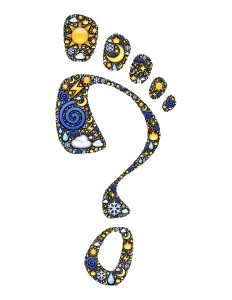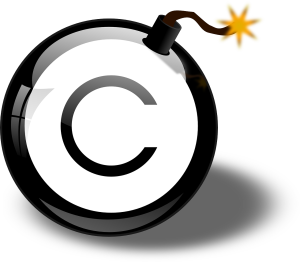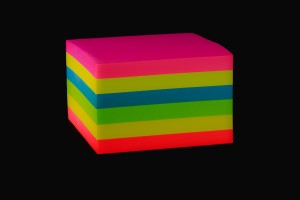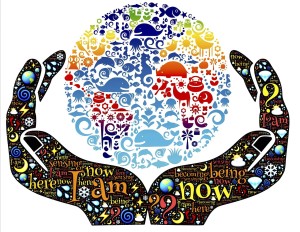What Is Spinning?
Spinning is just a modern term for saying something a different way. If you had the kind of schooling that I had, then you had to rewrite your own sentences to make them more interesting, or replace the adjective “nice” with another that was more elegant or appropriate, or you had to say how something worked “in your own words”. For instance, if the teacher had just explained a particular experiment or spoken of a particular book, you had to speak or write about that in different words from those the teacher had used. This was to see if you had understood the ideas.
Why Spinning?
I don’t know. The original word “to spin”, referred to making fabric or producing a thread or filament or to turning around on one spot, and more recently to exercise classes on a stationary bike. Those meanings do not seem to have anything to do with changing the words with which something is described. Perhaps it has to do with the phrase “He can spin a good yarn”, which means that a person tells a good story (often untrue).
How Do You Spin?
The idea of spinning is very easy. You just say something in different words from those someone else used. We do it all the time. A child’s favourite story may be about a train or a forest animal or a magical being. While we may be able to rhyme the story off word for word if we read it often enough, mostly we tell the same story in different words each time and the child is generally content (though not always) because they understand that the STORY is the same, even if the words telling it are different.
So starting a story with “Once upon a time” means the same as “Long, long ago” or “When granny’s granny was a girl”, or “Many moons ago”. These are all time honoured means of telling folk tales and the same principle can be applied to other material too.
What about Copyright?
First of all, I am NOT a lawyer, so what I am about to write does not necessarily cover the law of copyright correctly or in full. And copyright laws are different in different countries. If you need to know the law on copyright, consult your legal adviser. What follows is MY understanding of copyright and it may not be correct.
What you write is copyright, the INSTANT you write it.
That means what I have written here is my copyright. If I write a poem or an observation or a thought straight out of my head, that is MY copyright. The same applies to any photographs or drawings or doodles, or infographics that I might create and upload here. The same applies to everyone else, their words and graphics are their copyright. That means you cannot use them without permission, unless they are dead a long time and the items are out of copyright or the person has provided them free for use. All the pictures used on this site are either my creation or they have been obtained from Pixabay where people upload graphics and pictures on the understanding that other people can use them for free (but not sell them). Copyright also applies to other things like the font used or the layout or the structure of the article.
No Copyright In Facts
On the other hand, there is no copyright in FACTS. A fact is that the sun rises in the east every day, or that 7/8 of the world is covered in water or that 9/10 of an iceberg is below the surface of the ocean. It is thus fine to write “The sun rose in the East” as many times as you like, even if someone else has written it a million times too.
Examples of Spinning – REWRITE
If someone writes, “The flaming sun rose over the eastern ocean, glinting off the now pink iceberg”, you CANNOT copy that dreadful prose (if you even wanted to) but you could rewrite it, for instance, saying “As the sun rose, it turned the iceberg pink.”
This would be an example of REWRITING an article. It is possible to rewrite an entire article by going through it and replacing sentences, paragraphs or words with your own version of text. This could still be called a copyright violation, though, because the STRUCTURE of the article might be the same.
Let’s take a nursery rhyme example, with Humpty Dumpty.
There is no copyright in Humpty Dumpty, as it is so old, so I can use it freely.
Humpty Dumpty sat on a wall,
Humpty Dumpty had a great fall.
All the King’s horses and
All the King’s men,
Couldn’t put Humpty together again.
If necessary, I could rewrite that as:
An egg named Humpty balanced on the garden fence
He tumbled off, breaking into pieces the size of 5 pence
All the doctors and nurses
And ambulance men
Were unable to patch up poor Humpty again.
While the words are very different, the STYLE of writing and the STRUCTURE are very similar, so there could be copyright violation claimed if that were a piece of new writing. (Humpty Dumpty is too old for copyright to exist.)
Make it Very Different
If I wanted a very different version of Humpty, I could write it as prose, for instance,
Humpty Dumpty was a character who loved to take risks. He jumped the furthest, climbed the highest and ran the fastest but he met his downfall in his own garden, when he fell from the wall while watching a passing parade. Although all the cavalry riders tried to help, none of them could mend him and sadly he died.
Alternatively, I could put it into bullet points:
Humpty Dumpty
- sat on a wall
- fell
- broke into many pieces
- could not be returned to health
Each of these versions is entirely different from the original and while the overall story is the same (the facts are the same), the style and layout and structure are very different. If you need to rewrite an article, you need to make sure that every part of it is different, while keeping the key facts the same.
Spinning Examples – MULTIPLE VERSIONS
What we have learned above can also be used to create multiple versions of an article for use on different web sites. Why? Let’s say you run 10 web sites, all covering “how to write for the web”. They won’t be exactly the same web sites, each one will cover a slightly different niche in online writing, one might cover “overcoming writer’s block” another might cover “motivating yourself to write”, another might cover “finding writing jobs online”, etc. While each blog is different, it is still possible to post articles covering the same topic or area to each one of your sites, for instance, you might decide to write an article on “finding the right topic” and realise that it would be suitable for ALL your blogs but you don’t feel like writing the same thing 10 times over, nor can you post the same article on each site – that looks like every site has been copying from somewhere! This is where spinning multiple versions comes in handy.
You can spin manually and you can also purchase a spinner that will make the task a lot easier. It’s always useful to see how a spinner works so let’s look at how to spin manually. Our original article reads as follows:
“It is so easy to find topics to write about on a blog, just look around you: what is the weather like, what season is it, what are people doing, what sport are you watching, how are your teams doing, what problems do your fellow workers have, what new technology would you like to try, what are your earliest memories? These are just a few topics that you could use for writing a blog. If you are having difficulty writing, then choose one of these topics and write 100 words on it, yes just 100 words, that’s all. You could always choose another topic and write another 100 words on that, if you wanted.”
What did we do with Humpty first? We put it into different words. So let’s try that first:
There are an almost infinite number of topics that can be written about on a blog. You could write about the weather and the seasons, or about people, such as the sports they are watching or taking part in and how any competitive sports are progressing. There are also the types of problem people have, maybe with new technology or even what happened in the past. Try picking one of these topics and writing a few words on it, then another and seeing if you can relate the two. Be creative in how you relate them!
The words are pretty different in version 2 but the structure is pretty similar. So what did we do next with Humpty? We changed it from a poem, to prose. Now I have no intention of trying to do the reverse and make a poem of it, so let’s skip to the next alternative, which was “bullet points”. That would be a useful way of putting this information across.
What topics can be written about in a blog? Lots – let’s see:
- weather, seasons
- sports, watching, competing
- Problems, technology, memories
Pick just one of these topics and write a short paragraph on it
We now have three different versions of the article but we have 10 sites! How do we make them different for the different sites?
SPIN THEM
We basically have an article with 3 sections and we have 3 versions of each section:
Section 1 is “It is so easy to find topics to write about on a blog, just look around you:” That is version 1.
Version 2 is: “There are an almost infinite number of topics that can be written about on a blog.” and
Version 3 is: “What topics can be written about in a blog? Lots – let’s see:”
If we are writing a blog, we could choose any one of those sentences and it would mean the same and start the blog off with no problem.
Let’s look at section 2
Version 1 says, “what is the weather like, what season is it, what are people doing, what sport are you watching, how are your teams doing, what problems do your fellow workers have, what new technology would you like to try, what are your earliest memories?”
Version 2 says, “You could write about the weather and the seasons, or about people, such as the sports they are watching or taking part in and how any competitive sports are progressing. There are also the types of problem people have, maybe with new technology or even what happened in the past.”
Version 3 reads: ”
- weather, seasons
- sports, watching, competing
- Problems, technology, memories”
Each one of these is different, though we could make them even more different by changing the order of the items and changing the items that are included and each one of these versions could substitute for the other version.
Two sections – 9 variations
We have done only two sections of our proposed post and we now have NINE possible variations. How? You multiply the number of variations together. We have 3 variations for section 1 and 3 variations for section 2. 3 X 3 = 9. Let’s check:
Article 1 could be variation 1, with variation 1. Article 2 could be variation 1 with variation 2 and article 3 could be variation 1 with variation 3. We also have 2:1, 2:2 and 2:3 and 3:1, 3:2 and 3:3 – NINE possible articles and they all read correctly. Have a look at them and try them out.
Section 3, we have 3 variations of this too:
Variation 1, “These are just a few topics that you could use for writing a blog. If you are having difficulty writing, then choose one of these topics and write 100 words on it, yes just 100 words, that’s all. You could always choose another topic and write another 100 words on that, if you wanted.”
Variation 2 is, “Try picking one of these topics and writing a few words on it, then another and seeing if you can relate the two. Be creative in how you relate them!”
Variation 3 is “Pick just one of these topics and write a short paragraph on it”. Again, all of these are interchangeable.
Three sections – 27 variations!
We have now added another 3 variations on the last section. Multiplying that up again, we have 3 X 3 X 3 = 27 different articles. Of course, a human being reading all three would recognise that they are all pretty much the same, however, it is possible to spin so thoroughly, including leaving sections out, using variable headings and different structures that the articles produced would look VERY different from one another and not even a human reader would be able to tell your articles had been spun.
More Advanced Spinning
It is possible to do much more advanced spinning than this but that is for another article.









